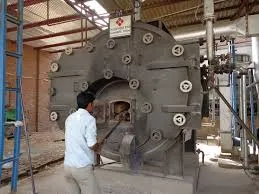
Aug . 09, 2024 04:00 Back to list
Exploring the Expenses and Benefits of Using High Pressure Steam in Industrial Applications
The Cost of High Pressure Steam An Economic Perspective
High pressure steam plays a crucial role in various industrial processes, from electricity generation to chemical manufacturing. While its utilization is essential for efficiency and productivity, understanding the cost associated with producing and utilizing high pressure steam is paramount for businesses aiming to optimize operations and control expenses.
Understanding High Pressure Steam
High pressure steam is defined as steam that exceeds the standard atmospheric pressure of 101.3 kPa (14.7 psi). Typically, this steam is generated in a boiler and is characterized by its ability to transfer heat efficiently and provide significant energy, which is essential in processes such as turbine operation in power plants, heating in chemical reactors, and even in refining operations.
Factors Influencing Cost
1. Fuel Costs The primary factor influencing the cost of high pressure steam is the price of the fuel used to produce it, whether natural gas, coal, or oil. Fluctuations in global energy prices directly impact the operational expenses of steam generation. As countries transition towards green energy, the costs associated with alternative fuels and technologies may also shape future steam production expenses.
2. Boiler Efficiency The efficiency of the boiler plays a significant role in determining overall costs. High-efficiency boilers can reduce fuel consumption, thus lowering the cost of steam production. Investing in modern, efficient boiler systems can yield long-term savings despite a potentially higher initial capital expenditure.
3. Maintenance and Operation The operational costs of maintaining a steam generation facility cannot be overlooked. Regular maintenance is essential to prevent breakdowns that can lead to costly downtime. Additionally, skilled personnel are required to operate and maintain steam systems effectively, adding to the labor costs associated with high pressure steam.
cost of high pressure steam

4. Steam Distribution Once generated, high pressure steam must be transported to various points of use within an industrial facility. The design and length of the distribution system influence both energy losses and operational costs. Insulation, pipe diameter, and system layout affect steam loss and, consequently, the amount of steam that needs to be generated.
5. Regulatory Compliance Compliance with environmental regulations can introduce additional costs associated with high pressure steam systems. Facilities must invest in emissions reduction technologies and monitoring systems to adhere to local and national regulations, which can be both costly and complex.
Economic Implications
The total cost of high pressure steam has a profound impact on the overall economics of industrial operations. For manufacturing facilities, in particular, the expense associated with steam production can represent a significant portion of operating costs. Companies must continually assess their steam generation methods, considering both the direct costs and the broader implications on productivity and environmental impact.
For decision-makers, accurately forecasting and managing these costs is critical. Employing advanced technologies, such as thermal energy storage and intelligent control systems, can aid in optimizing steam production and usage. Furthermore, companies might explore alternative energy sources or more innovative steam generation technologies to minimize costs in the long run.
Conclusion
The cost of high pressure steam encompasses a multitude of factors, each contributing to the overall economic picture of industrial operations. As industries strive for greater efficiency and sustainability, understanding these costs becomes increasingly important. Businesses that prioritize effective steam management will be better poised to maintain competitiveness in an ever-evolving market landscape while driving down operational expenses. In this complex interplay of economics and engineering, the ability to adapt to changing conditions will be a key determinant of success in the realm of high pressure steam utilization.
-
High Efficiency Gas Fired Thermal Oil Boiler for Industrial Heating
NewsJul.29,2025
-
High-Efficiency Gas Fired Hot Water Boiler for Sale – Reliable & Affordable
NewsJul.29,2025
-
High Efficiency Biomass Fired Hot Water Boiler for Industrial and Commercial Use
NewsJul.29,2025
-
High-Efficiency Biomass Fired Hot Water Boiler for Industrial Use
NewsJul.28,2025
-
High Efficiency Coal Fired Hot Water Boiler for Reliable Heating
NewsJul.28,2025
-
High Efficiency Coal Fired Thermal Oil Boiler for Industrial Heating
NewsJul.26,2025
Related PRODUCTS






















